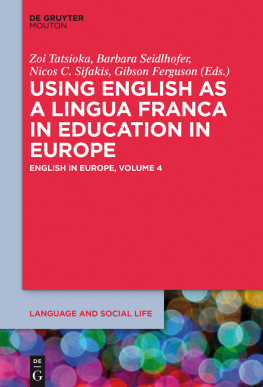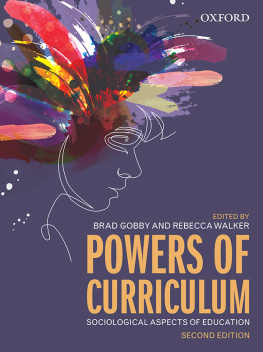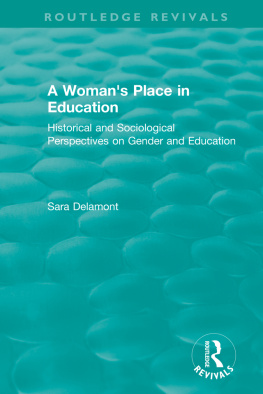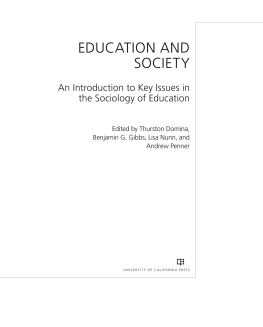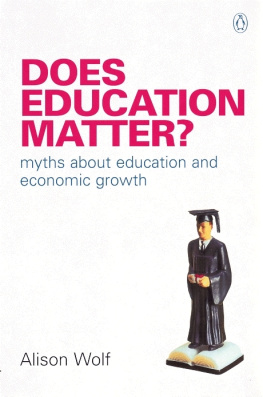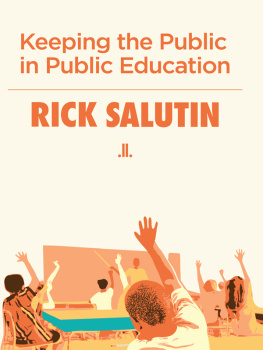First published in 1965
by Routledge
Reprinted in 1998, 2000, 2002
by Routledge
2 Park Square, Milton Park, Abingdon, Oxon, OX14 4RN
Simultaneously published in the USA and Canada by Routledge
711 Third Avenue, New York, NY 10017
Transferred to Digital Printing 2007
Routledge is an imprint of the Taylor & Francis Group, an informa business
First issued in paperback 2013
1965, 1967 W. A. L. Blyth
All rights reserved. No part of this book may be reprinted or reproduced or utilized in any form or by any electronic, mechanical, or other means, now known or hereafter invented, including photocopying and recording, or in any information storage or retrieval system, without permission in writing from the publishers.
The publishers have made every effort to contact authors/copyright holders of the works reprinted in The International Library of Sociology.
This has not been possible in every case, however, and we would welcome correspondence from those individuals/companies we have been unable to trace.
British Library Cataloging in Publication Data
A CIP catalogue record for this book is available from the British Library
English Primary Education - Part II: Background
ISBN 978-0-415-17763-4 (hbk)
ISBN 978-0-415-86862-4 (pbk)
Publishers Note
The publisher has gone to great lengths to ensure the quality of this reprint but points out that some imperfections in the original may be apparent
I N 1963 the Central Advisory Council for Education (England), under the chairmanship of Lady Plowden, was required to consider primary education in all its aspects and the transition to secondary education. Thus, for the first time since the publication of the two reports of the Consultative Committee of the Board of Education on The Primary School (1931) and Infant and Nursery Schools (1933), primary education has been singled out for specific official scrutiny. This should stimulate the English educational world in general to consider primary education more closely and to examine its various aspects more carefully.
One of these aspects may be legitimately termed the sociology of primary education. Since 1945, British sociologists have paid increasing attention to education, so that the sociology of education is now an established and expanding field of study and research. Its impact has already been felt on our general habits of thinking about education, and more specifically on the Central Advisory Councils recent reports 15 to 18 (Crowther Report, 1959) and Half our Future (Newsom Report, 1963). Yet it is noticeable that most of the research, and most of the general writing, in the sociology of English education has been confined to secondary and further education, almost as though sociologists thought that life began at eleven-plus. Even Ottaways pioneering textbook (1953) displayed this emphasis. Ironically perhaps, it was through examination of the problems of secondary education, and particularly those of selection for secondary education, that the attention of sociologists has been increasingly drawn towards primary education too.
Meanwhile, there has been a growing tendency for writers about primary education itself to pay attention to sociological factors, both those associated with the organisation of primary schools as communities, and those more directly related to the home and community background of primary-school pupils. This sociological awareness is particularly evident in books such as those by Atkinson (1949), Mellor (1950) and Ross (1960), and is also apparent in the official handbook on Primary Education (1959). Yet there is still no single, systematic, comprehensive work which combines a general sociological description of English primary education with a survey of the results of sociological investigations in this field. The present volumes have been written in the belief that there is a need for a study of this kind, and that it is required now, as an introduction to the sociological aspect of primary education, while the Plowden spotlight is focused on primary schools.


